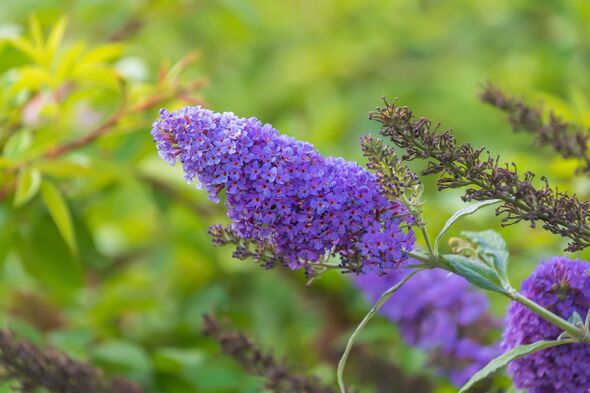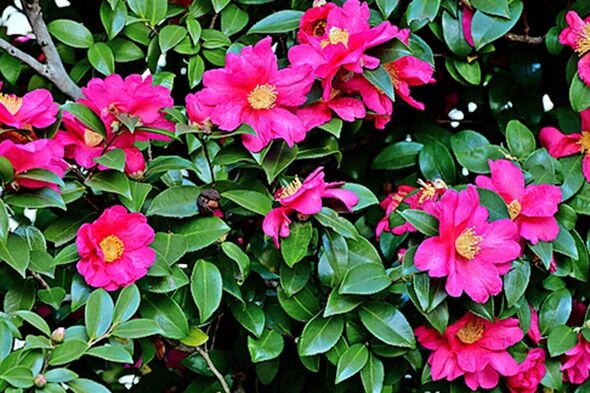
Adding new plants now will be worth the reward later in the year (Image: Nabiha Dahhan)
While the temperatures are still on the low side, you may be enjoying some cosy time indoors. However, as the spring approaches, there are ways you can get active in the garden. And adding new plants now will be worth the reward later in the year.
Bare-root plants are ideal for purchasing and planting, as they’re currently completely dormant. Trees and shrubs add extra privacy, shade and colour and can be the perfect touch for your garden, and buying bare-root is better value than containerised plants.
Also these dormant plants are quick to re-establish. The bare-root plants will arrive with no soil, and their roots wrapped for protection, ready to be immediately planted.
This means you need to have your garden ready for planting as soon as your bare-root plant arrives to get the best results. If the ground is frozen or waterlogged, delay ordering or buying until the ground is more suitable.

FEEDING TIME: Add plenty of good compost (Image: Catherine Falls Commercial)
Make sure the roots are kept moist in the meantime. If the weather doesn’t clear up for a while, I recommend temporarily planting it into some compost.
Prepare the planting site by digging a large hole, a couple of inches wider and the same depth as the plant’s rootball. You may want to dig some organic matter into the ground, particularly if your soil is quite dry.

DIG DEEP: Make hole same depth and width of the rootball (Image: Supplied)
Separate the roots gently, teasing them out so they have a good spread, before positioning them into the hole.
Make sure at this point the hole isn’t too deep; smothering the stem could cause it to rot. You should be able to identify the soil mark on the plant as a good indicator. Firm your plant in with soil, carefully levelling it with your foot to ensure there aren’t any air pockets. To get the best out of your bare-root plant, it will benefit from regular watering, particularly in dry weather.

BE FIRM WITH IT: Make sure there are no air pockets (Image: Jennifer Farrar)
It may also help to add a layer of mulch too to keep the moisture locked in, just ensure it isn’t pressing against the stem. A layer about 5cm thick should be sufficient.
If your bare-root plant is a tree, or may eventually require support, a strong timber stake could go a long way to stop strong winds causing damage as it grows.
Tie it gently with some twine so it is secure without damaging the stem to keep it upright until it is sturdy enough to stand alone.
Jobs of the Week:
- February is the perfect month to plant cheerful primulas. Perfect for giving late-winter pots immediate cheer, primulas are affordable and in garden centres now. They should provide flowers through to mid-spring.
- This month comes with a great opportunity to prune buddleja plants into shape. Some varieties of Buddleja davidii can become unruly if not pruned regularly, so now is a great chance to get ahead. Depending on the size of your plant, secateurs/pruners, loppers, or a pruning saw will suffice. Trim back top growth to half its height, then use loppers to cut the woody stems about a foot from the ground. A hard prune now will help it reach up to three metres tall by the same summer.

This month comes with a great opportunity to prune buddleja plants into shape. (Image: Getty)
- If you’ve been considering planting fruit trees, now is your chance. Best planted between December and March while dormant, choose some you would like to cultivate. Whether it’s an apple variety, some sweet pears, or perhaps even cherries, get prepped for planting now.
- While you still have the chance before the growing season, make sure seed trays are clean and sterile before sowing. Clean them with water and mild soap, scrub, and rinse all the suds away. Then, clean them with a general garden disinfectant, rinse, and leave to dry. These measures prevent any lingering fungal diseases affecting growth of new plants.
- Buy your compost ahead of growing season to ensure you have everything you need for spring. You may even find there are still some winter deals in garden centres you could benefit from. Just ensure that you store it somewhere dry until you’re ready to use it in your garden.
• Head to my YouTube channel @daviddomoney for new gardening videos.
Plant of the Week: Camellia

Camellias produce a wonderful show of flowers (Image: Nobutoshi Akao)
Fantastic for consistent colour throughout the year, these glossy evergreen shrubs produce a wonderful show of flowers in a wide variety of colours. And what’s truly striking about camellias, is their flowers appear between late winter and early spring, depending on the variety. With other blooms few and far between at this time of year, they’re truly stunning. A lovely variety which starts blooming this month is Camellia x williamsii ‘Donation’, which produces dainty light-pink, semi-double blooms through the early spring.
Camellias are acid-loving, worth knowing before planting. You can test your soil with a kit to find out its pH. Aim for between 6 and 6.5, slightly on the acidic side. But don’t worry if yours is more alkaline, you can grow them in pots of ericaceous compost. They’re ideal for a variety of positions but are most happy in partly sunny locations. Camellia sasanqua, in particular, is fond of a sunny locale but avoid positioning next to other trees or shrubs as camelias grow best without competition. To see me plant one in my garden, head to my YouTube channel @daviddomoney for a new Camellia video.
Did you know?

The origin of the name “beetroot” is more simple than you may think. (Image: Connect Images)
One of our favourite nutritional root vegetables, the origin of the name “beetroot” is more simple than you may think. The botanical name Beta comes from the Celtic word “bett”. This literally translates to ‘red’, describing their vivid colour.
Bananas can impact how ripe (or overripe) the fruits in your fruit bowl are. They release “ethene” gas, which breaks down the cell walls of other fruits. This means they ripen much faster. There are a few exceptions, however, such as oranges.

Bananas can impact how ripe (or overripe) the fruits in your fruit bowl are. (Image: Westend61 / Doris.H)
Blueberries will fruit better when grown in pairs. This is because cross-pollination between them can boost fruit development, meaning a larger crop each year.
The aptly named “night-scented phlox” (Zaluzianskya ovata) produces most of its honey-vanilla fragrance once the sun goes down. This encourages night pollinators like moths to land on them.














